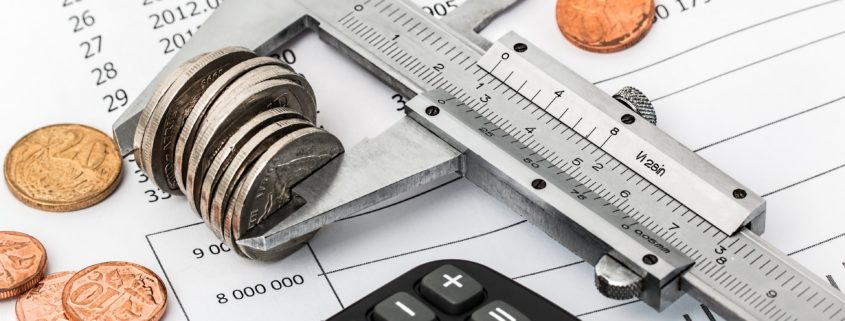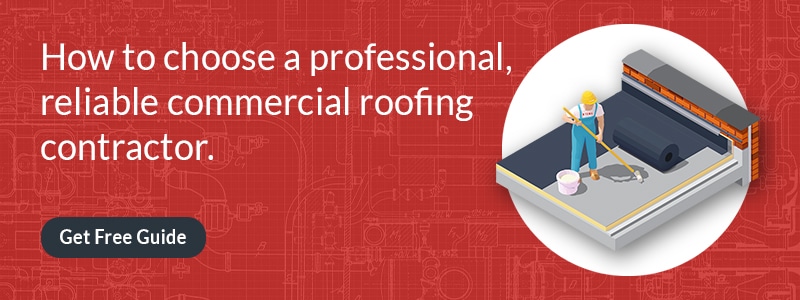Commercial Roof Costs: How Much Should You Pay In Youngstown?
Every situation is unique, and because no two roofs are the same, the average cost of putting a new roof on a commercial building varies. If you’ve gotten to the point of contacting some commercial roofers for estimates, you’ve probably noticed that their quotes for repair or replacement are different (in some cases, significantly different), too.
That’s because, when it comes to commercial roof cost, there are several factors that impact the final price.
→ Download Our FREE Guide To Choosing a Commercial Roofing Contractor
-
The Size of Your Commercial Roof
When a roofer comes to your property to provide an estimate for services, they will take an accurate measurement based on total square footage. The square footage of your building will then help determine the cost of re-roofing (which is also dependent upon the type of roofing material — EPDM, TPO, metal roofing, etc. –– that you ultimately choose).
-
The Slope or Pitch of Your Roof
The pitch of your roof is a crucial factor in figuring roof cost. There are two reasons for this.
- A steep roof, usually recognized as a 6:12 pitch, is traditionally considered “not walkable,” and it requires more staging, labor and safety to handle the roof compared to a low slope roof.
- Depending on the roof being installed, roof pitch (along with the fire rating required) determines the underlayment system, which plays a crucial role in pricing a roofing job correctly.
For example, if you need a composition shingle roof that is between a 2:12 and 4:12 pitch, two layers of underlayment are required. However, if you are dealing with a metal roof or flat roof that has a pitch between ½:12 and 2:12, your commercial roof may require specialized a underlayment to achieve the Class A fire rating.
-
Roofing Material Used for Roof Replacement
The type of material you choose for your commercial roof affects the final cost of the project.
The cost of roofing materials for flat roof replacement varies. Some of the most common materials include built-up roofing (BUR) membranes, metal roofing, thermoset roof membrane (EPDM), and thermoplastic – TPO and PVC – roof membrane.
It’s always a good idea to get to know some of the options for commercial roofing materials in order to be confident knowing that you’ve selected the right one. A knowledgeable roofer will also be able to assist in this process and discuss appropriate systems for your commercial building.
-
Peaks and Valleys vs. Flat Roof
When there is a peak, skylight, chimney, valley or anything else that requires two planes to join, your commercial roof will require more materials, attention and time.These areas are most prone to leaks if the material is not installed properly.
Ensuring that the roofing material in the valleys and adjoining areas are done properly makes the additional cost well worth it. After all, if these areas aren’t closely monitored during the installation, serious leaks and other problems are bound to occur.
Don’t let the roofing company gloss over this step. It’s important in order to ensure that your roof won’t have any damage or issues in the future. Make sure you’re working with a commercial roofing company that takes every precaution to make sure your roof is installed properly and made to last.
-
Existing Layers from Previous Roof Installation
In most cases, roof tear-off price is determined by how long it takes to remove the roof (labor) along with the disposal cost for the old roofing materials. (The material’s weight usually determines this.)
The heavier the material is, or the more there is of it, the longer it takes to remove the existing roof. Also, costs for removal and disposal increase with the amount of roofing material. As such, roof replacement cost may actually be higher than the cost of installing a new roof on a brand new building.
-
Roof Accessibility
Another factor that can affect labor costs is whether or not the roof is easy to reach. While this issue isn’t necessarily a concern for most free-standing buildings, it’s certainly a factor in areas with a tighter fit between the buildings or when the commercial roof is surrounded by trees, etc., because it takes more time and equipment to get the job done.
During the installation process, the roofing crew needs to be able to get onto the roof and transport materials up and down it. If the process involves more equipment or additional time, it will result in a higher cost for your project.
-
Additional Roofing System Components
Do you plan to have other parts of your roof replaced at the same time? If so, the cost of materials and labor will increase.
Usually, these components include decking, underlayment, and ventilation, which are essential parts of any roofing system and are certainly a quality investment. For example, if you have had issues with ice dams in the winter, it’s smart to have ventilation installed, which can help prevent issues from occurring.
Estimating Roof Cost: Now You Know
As you can see, several factors impact commercial roof cost when considering new roof installation in and around the Youngstown, OH area. Be sure to also keep our area’s weather in mind, because it can play a part in not only the roofing material you choose but also the accessibility of your roof (depending on the time of year).
Remember, no two roofing jobs are the same. And while it’s virtually impossible to predict the cost of roof repair or new roof installation on your own, the best thing you can do is contact two to three roofing professionals and get estimates for service.
If you have a commercial roofing project, TEMA is ready to work with you. We are a trusted, local commercial roofing company with generations of experience in the industry. We are happy to answer your questions and pride ourselves on exceeding customer expectation.






